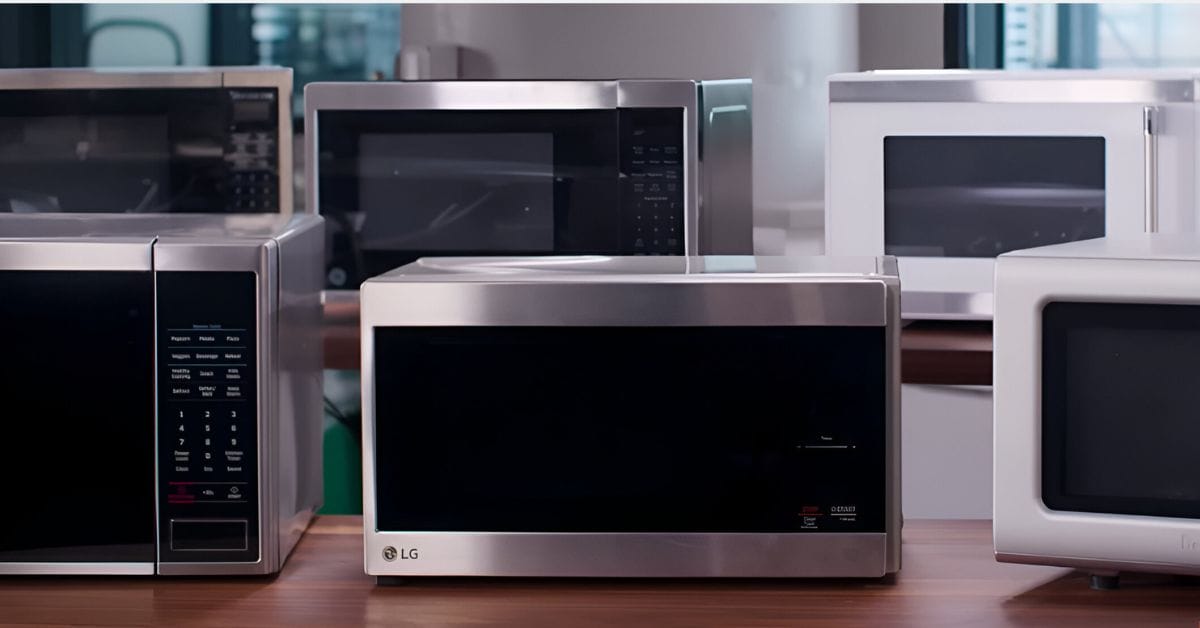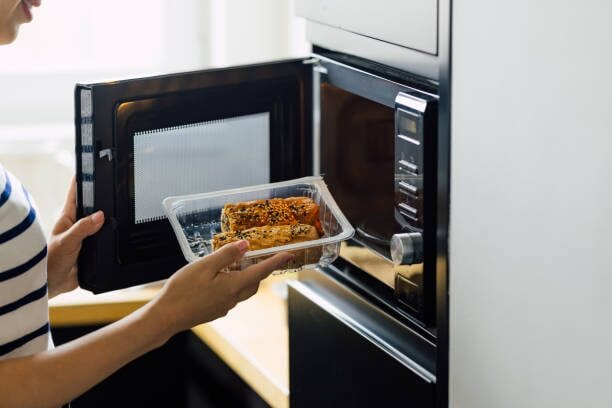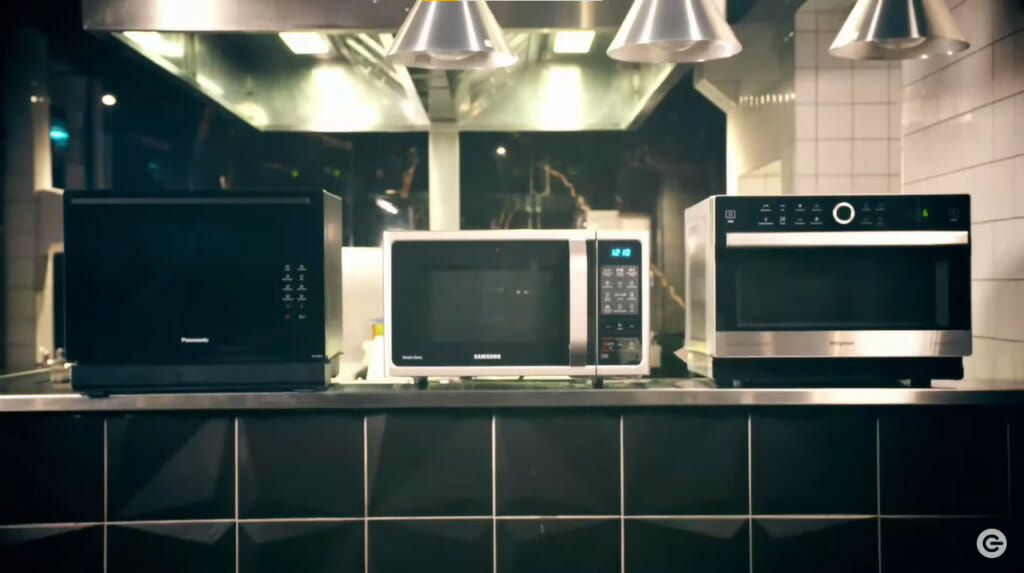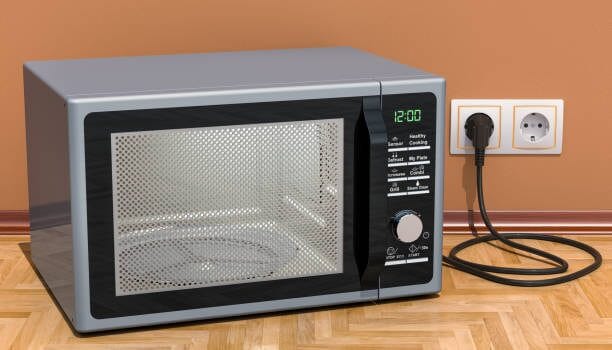Does a Microwave Need a Dedicated Circuit (Guide)

Powering up your microwave matches it to the right circuit based on its power needs. I’ve seen a lot of kitchens, and let me tell you, not all microwaves are created equal when it comes to their wattage.
Here’s the breakdown: Your smaller countertop microwaves are versatile and don’t demand much. You can plug these into your ordinary branch circuits. But when you step up to the larger microwave ovens, that’s where you need to shift gears. These larger units pack more punch and need a dedicated circuit.
Let’s dive into what you need to know about powering your microwave based on my experience in the field.
What Types of Microwave Need a Dedicated Circuit

Let me give you the lowdown on microwave circuits from my own experience. It all boils down to how much power your microwave is packing – we’re talking wattage here.
Microwaves with 1,000 watts or more need their own dedicated circuit. I’ve seen it repeatedly; these types, especially the oven-like models, gobble up energy. They might cause voltage issues without their own circuit – trust me, it’s not something you want to deal with.
Now, the smaller countertop microwaves, usually ranging between 500 to 800 watts, are more laid back. I’ve hooked these up in many kitchens, and they usually share a circuit with other appliances.
But then, the middleweights are in the 600 to 1,200 watts range. Here’s where it gets interesting. Based on my experience, whether these can share a circuit depends on your home’s wiring and what else is on the line. It’s not always a clear-cut decision, more like a judgment call. Sometimes they’re fine on a shared circuit, other times they need their own space.
And for the large-sized microwaves, packing 1,000 to 1,700 watts, they need a dedicated circuit. I’ve seen situations where not having one for these beasts led to frequent breaker trips. They need that exclusive lane on the electrical freeway to run efficiently.
Here’s a pro tip from someone who’s been there: Always, and I mean always, check your microwave’s voltage and amp rating. This info is your roadmap to understanding its power needs.
It’s usually on a label somewhere on the unit. If you can’t find it, or if there’s any doubt, play it safe and opt for a dedicated circuit. Better safe than sorry when it comes to keeping your kitchen running smoothly.
Does the National Electrical Code Require Dedicated Circuits for Microwaves?

Let’s tackle the big question about the National Electrical Code and microwaves. This stuff is crucial – it’s all about keeping your kitchen running smoothly and safely.
From my time in the field, working on various home projects, I can tell you the code isn’t black and white about needing a dedicated circuit for every microwave. But it gives us some smart guidelines, especially for home appliances.
Here’s what I’ve learned: When you plug your microwave into a circuit that’s also powering other gadgets – that’s your typical branch circuit – you’ve got to watch the load.
The rule of thumb is that your microwave shouldn’t hog more than 80% of the circuit’s power capacity. For example, on a 30-amp circuit, keep any appliance, including the microwave, under 24 amps. It’s about keeping the balance right so you don’t stress your electrical system.
There’s an extra point to consider for the bigger, more permanent microwaves, like those oven combos. Their amp needs should be less than half the capacity of the circuit.
I remember working in a kitchen where we had to ensure a 24-amp microwave was hooked to at least a 48-amp circuit. This ensures everything runs without overloading, keeping things safe and efficient.
Sticking to these guidelines is more than just following rules; it’s about ensuring your electrical setup fits the task. I’ve seen too many cases where overlooking these details led to problems.
Comparison Table: Dedicated vs. Shared Circuits for Microwaves
From my hands-on experience setting up kitchens, I’ve learned that choosing between dedicated and shared circuits for your microwave isn’t just about plugging it in and hoping for the best. It’s about understanding the needs of your appliance and balancing them with your home’s electrical capabilities. Let’s lay it out in a clear-cut comparison table.
| Aspect | Dedicated Circuit | Shared Circuit |
|---|---|---|
| Power Handling | Can handle high-wattage microwaves (1,000 watts and above). | Best suited for lower-wattage microwaves (below 1,000 watts). |
| Safety | Reduces the risk of overloading and circuit breaker tripping. | Higher risk of overloading if used with high-wattage appliances. |
| Installation | May require professional installation, especially in older homes. | Typically already in place; no additional installation needed. |
| Flexibility | Dedicated solely to the microwave; not usable for other appliances. | Can be used for multiple appliances, offering greater flexibility. |
| Cost | Potentially higher initial setup cost due to additional wiring. | More cost-effective if existing circuitry can handle the load. |
| Convenience | Ensures consistent power supply for heavy-use microwaves. | May need to monitor overall usage to avoid tripping the circuit. |
| My Experience | Ideal for kitchen remodels or when adding high-powered appliances. | Works well in smaller kitchens or for less frequently used microwaves. |
Remember, each kitchen and microwave is unique. I’ve seen scenarios where a dedicated circuit was a lifesaver for a heavy-duty microwave and others where a shared circuit did the job perfectly for a compact model. Weigh these pros and cons against your kitchen’s needs and your microwave’s power requirements to make the best choice for your setup.
Factors to Consider for Your Microwave’s Circuit

Let’s talk about setting up your microwave’s circuit – this is key to keeping your kitchen running like a dream and safe as a fortress.
Dedicated Circuits: In my days of fixing up kitchens, I’ve seen that those high-wattage microwaves, the ones over 1,000 watts, need their own dedicated circuit. This way, you avoid any electrical mishaps and keep things running smoothly.
Branch Circuits & GFCI: If you’re plugging into a shared circuit, consider bringing a GFCI outlet into the mix. If it senses anything fishy with the electricity, it cuts the power to that outlet. This is a smart move for microwaves on the heavier side of wattage, but not quite in the dedicated circuit league.
Circuit Breaker Size: I think it is finding the perfect fit. For microwaves under 600 watts, a 15-amp breaker works fine. Between 600 and 1,000 watts, you’re looking at a 20-amp breaker. And for the big guys over 1,000 watts, a 30-amp breaker is your best bet. This ensures your microwave runs without tripping over itself.
Safety First: Always keep safety front and center. Whether a solo circuit or a shared one, the key is to ensure it can handle your microwave’s hunger for power without causing any electrical hiccups.
Proper Installation: Remember, setting up an electrical circuit isn’t child’s play. If you’re uncomfortable with DIY electrical work, get a pro. It’s like calling in a gourmet chef – they know what they’re doing and get it right.
Kitchen Layout: Where you place your microwave matters. It should be convenient to use and close to its power source. It’s all about striking the right balance between ease of use and electrical practicality.
Future-Proofing: Are you planning to upgrade your microwave or add more appliances? Ensure your electrical system can handle whatever you throw at it. It’s like packing extra supplies for a long journey – better to have it and not need it than the other way around.
By looking at these factors, you’re setting up your kitchen for success, ensuring everything runs as smoothly as a well-oiled machine. And always remember, when in doubt, safety comes first!
Frequently Asked Questions
- Can I Plug My Microwave Into Any Outlet?
- While most microwaves can be plugged into standard outlets, checking the wattage is crucial. Microwaves with higher wattage may require a dedicated circuit to prevent overloading.
- Do Built-In Microwaves Require Special Wiring?
- Generally, yes. Built-in microwaves often have higher power requirements and should be wired to a dedicated circuit for optimal safety and performance.
- How Do I Know If My Circuit Can Handle a New Microwave?
- Check the amp rating of your circuit and compare it to the microwave’s requirements. Remember, the appliance should use only up to 80% of the circuit’s capacity.
- Is It Hard to Install a Dedicated Circuit?
- Installing a dedicated circuit can be complex and typically requires professional electrical knowledge. When in doubt, call in a pro!
- Can a Microwave Share a Circuit With Other Appliances?
- Small, lower-wattage microwaves can sometimes share a circuit, but it’s not advisable for larger models. Always consider the total wattage being used on the circuit.
- Will A New Circuit Increase My Electric Bill?
- Adding a new circuit doesn’t inherently increase your electric bill. Your consumption depends on the appliance’s usage and efficiency.
- Is There a Risk in Using an Extension Cord with a Microwave?
- Yes, using extension cords with microwaves is generally not recommended, as they can cause power fluctuations and increase fire risk.
References
Organizations:
- National Electrical Code (NEC). https://www.nfpa.org/education-and-research/electrical/nec-enforcement-maps?l=278
Books:
- “Electrical Wiring Residential” by Ray C. Mullin and Phil Simmons. https://www.barnesandnoble.com/w/electrical-wiring-residential-ray-c-mullin/1116778103
Website Resources:
- MachineAnswered.com. https://machineanswered.com/does-microwave-need-dedicated-circuit-lets-find-out/
- Cookindocs.com. https://cookindocs.com/does-microwave-require-dedicated-circuit/
- PortablePowerGuides. https://portablepowerguides.com/does-a-microwave-need-a-dedicated-circuit/
